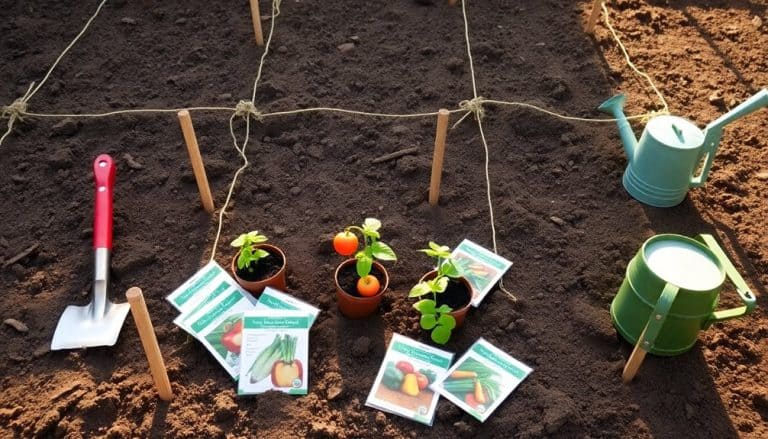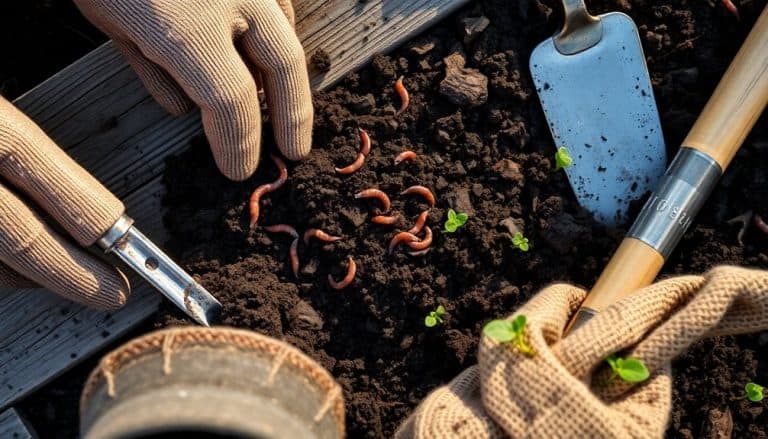This website contains affiliate links. Some products are gifted by the brand to test. As an Amazon Associate, I earn from qualifying purchases. The content on this website was created with the help of AI.
Start your first vegetable garden in 2024 by following these essential steps. First, select a level spot with 6+ hours of daily sunlight and easy water access. Test your soil’s pH and nutrients, then amend it with compost to create ideal growing conditions. Map out your garden’s layout, positioning taller plants northward and including maintenance paths. Choose beginner-friendly vegetables suited to your growing zone, and gather quality tools like spades, trowels, and pruners. Plant according to your zone’s frost dates, maintaining consistent watering with drip systems or soaker hoses. Monitor regularly for pests and diseases. These foundational steps will set you up for a bountiful harvest.
Key Takeaways
- Select a sunny location receiving 6+ hours of direct sunlight daily and test soil pH levels before planning your garden layout.
- Add organic compost to improve soil structure and nutrients, ensuring proper drainage to prevent waterlogging issues.
- Choose easy-to-grow vegetables suited to your climate zone and create a planting schedule based on local frost dates.
- Install efficient irrigation systems like soaker hoses and apply mulch to maintain consistent soil moisture and suppress weeds.
- Invest in essential gardening tools including spades, trowels, and pruners, keeping them clean and properly maintained.
Choose Your Garden Location
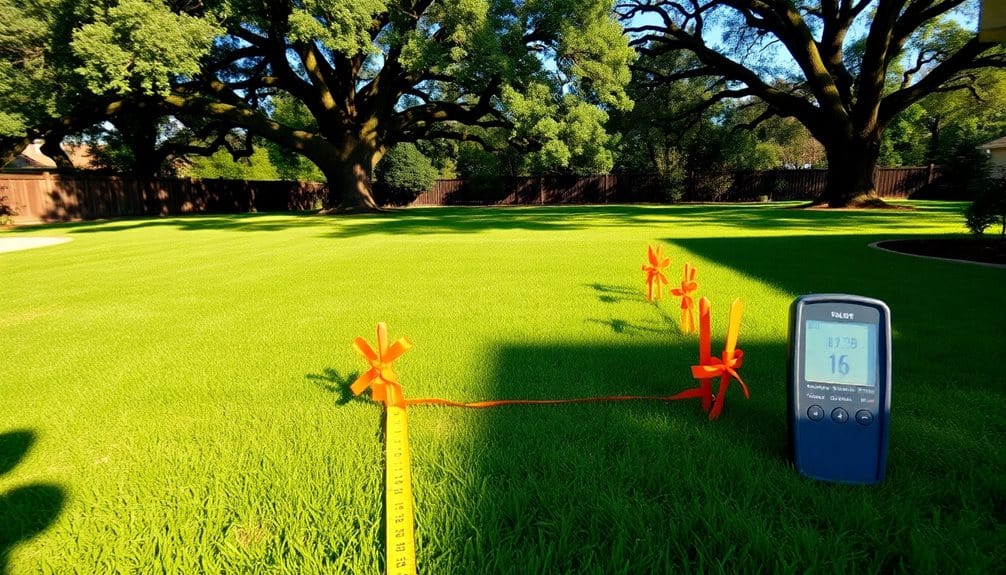
Selecting the right location for your vegetable garden can make the difference between a bountiful harvest and a disappointing growing season. Most vegetables need at least six hours of direct sunlight daily, so you’ll want to observe your yard throughout the day to identify the sunniest spots. South-facing areas typically receive the most sunlight in North America.
Your garden should be on level ground or a gentle slope with well-draining soil. Avoid low-lying areas where water collects, as this can lead to root rot and fungal diseases. Don’t place your garden too close to trees or large shrubs, as their roots will compete with your vegetables for water and nutrients.
Consider convenience when choosing your location. You’ll need easy access to a water source, and the garden should be close enough to your house that you won’t neglect daily maintenance. If you live in a windy area, look for a spot that offers some protection, such as near a fence or building. Also, verify your chosen location complies with local regulations and homeowners’ association rules regarding vegetable gardens.
Test and Prepare Soil
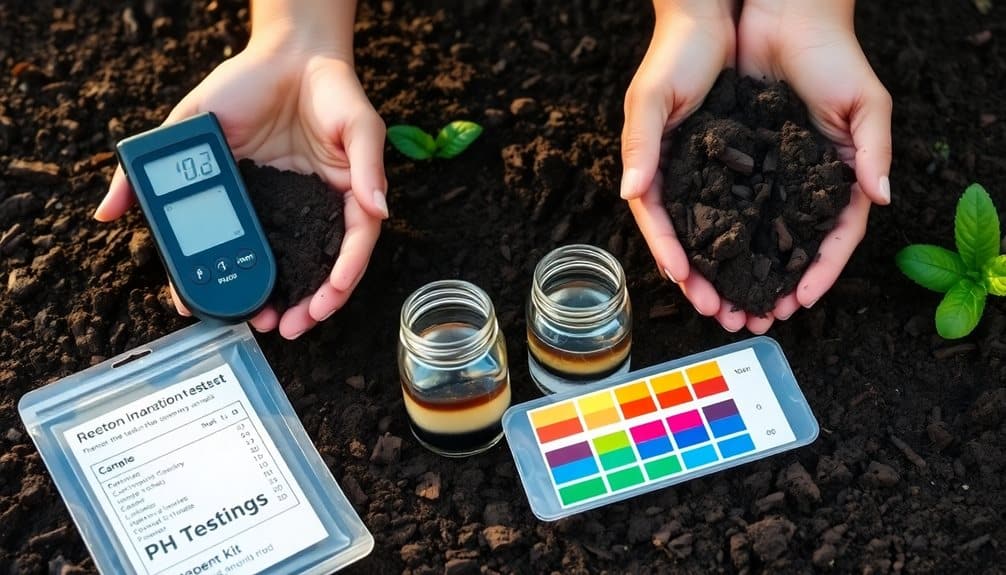
Before planting your first seed, you’ll need to understand and optimize your soil’s composition. Start by collecting soil samples from different areas of your planned garden and send them to a local extension office for testing. This analysis will reveal your soil’s pH level, nutrient content, and potential contaminants.
While awaiting results, examine your soil’s texture by performing a simple squeeze test. Grab a handful of moistened soil – if it holds its shape when squeezed but crumbles easily, you’ve got ideal loamy soil. If it’s sticky and dense, you’re dealing with clay; if it falls apart completely, it’s too sandy.
Based on your soil test results, amend accordingly. Add organic matter like compost to improve structure and nutrients. For clay soil, incorporate sand and organic matter to enhance drainage. For sandy soil, add compost and vermiculite to increase water retention. Adjust pH levels using lime to raise pH or sulfur to lower it, aiming for a range between 6.0 and 7.0 for most vegetables. Till amendments into the top 8-12 inches of soil, then let it settle for two weeks before planting.
For quick preliminary results, consider using a home test kit that can provide nutrient and pH readings within 60 seconds while you wait for the comprehensive lab analysis.
Plan Your Garden Layout

Now that your soil is ready, it’s time to map out your garden space strategically. Consider factors like sunlight exposure, water accessibility, and natural drainage patterns when designing your layout. You’ll want to position taller plants on the north side to prevent them from shading shorter ones, and group plants with similar water needs together for efficient irrigation.
When planning your vegetable garden layout, keep these essential principles in mind:
- Create paths that are at least 2 feet wide between planting beds to allow comfortable access for maintenance and harvesting
- Orient rows from north to south to guarantee even sun distribution across all plants
- Space plants according to their mature size to prevent overcrowding and competition for nutrients
- Group companion plants together to maximize growth potential and natural pest control
- Design with succession planting in mind, allowing space for later-season crops
Draw your layout on paper first, marking measurements and plant positions. Consider using raised beds or square foot gardening methods if you’re working with limited space. Remember to leave room for supports like trellises and stakes for climbing vegetables. For optimal organization and plant growth management, install heavy-duty steel shelving that can support up to 350 pounds per shelf to store your gardening supplies and seedlings.
Select Your Vegetables
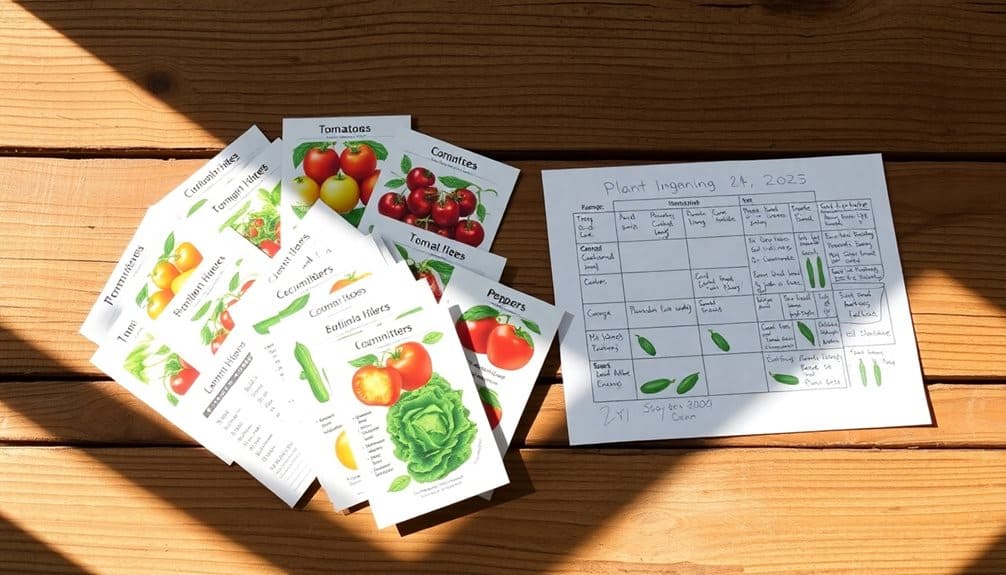
The right mix of vegetables can make or break your garden’s success. You’ll want to choose plants that match your growing zone, available sunlight, and the season you’re planting in. Start with vegetables you actually eat, and consider their growth habits and space requirements before making final selections.
Begin with easy-to-grow options like tomatoes, lettuce, peppers, and bush beans if you’re new to gardening. These vegetables offer reliable yields and don’t require complex care. You’ll also need to decide between growing from seeds or purchasing seedlings – seeds are cheaper but take longer, while seedlings provide quicker results.
Consider companion planting when selecting your vegetables. For example, plant basil near tomatoes to improve flavor and repel pests, or grow pole beans alongside corn for natural support. Don’t forget to include fast-growing crops like radishes and leaf lettuce that you can harvest within weeks, alongside longer-term vegetables such as winter squash and Brussels sprouts. Check each vegetable’s days to maturity to guarantee you’ll have harvests throughout the growing season. Using a galvanized metal bed can support up to 20 plants while providing excellent durability against weather conditions.
Gather Essential Gardening Tools
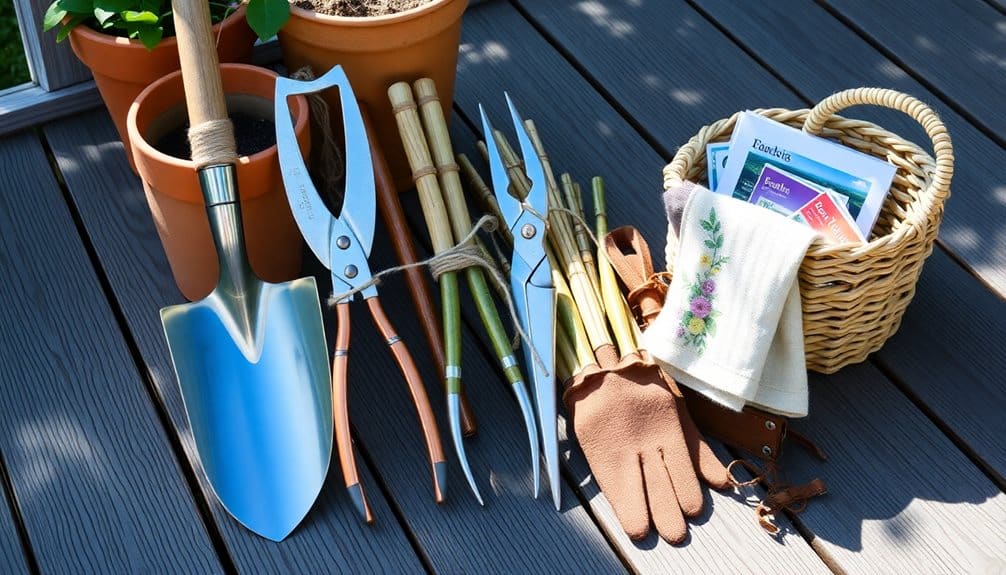
Setting up your vegetable garden starts with assembling the right tools for success. You’ll need a combination of basic and specialized equipment to properly prepare, plant, and maintain your garden throughout the growing season. While you don’t need to buy everything at once, having essential tools ready will make your gardening experience more efficient and enjoyable.
Your essential gardening toolkit should include:
- A sturdy spade and garden fork for breaking ground, turning soil, and harvesting root vegetables
- Hand trowel and cultivator for planting seedlings, weeding, and detailed soil work
- Garden pruners for harvesting vegetables and trimming plants
- Watering can or hose with adjustable nozzle for controlled irrigation
- Wheelbarrow or garden cart for transporting soil, compost, and heavy materials
Don’t forget to invest in quality tools that’ll last for years. Look for ergonomic handles, rust-resistant materials, and solid construction. Store your tools in a dry place and clean them after each use to prevent rust and soil-borne diseases from spreading. You’ll also want to keep basic maintenance supplies like oil and sharpening tools nearby. When selecting a garden fork, choose one with stainless steel tines for maximum durability and resistance to rust in varying soil conditions.
Plant and Water Properly
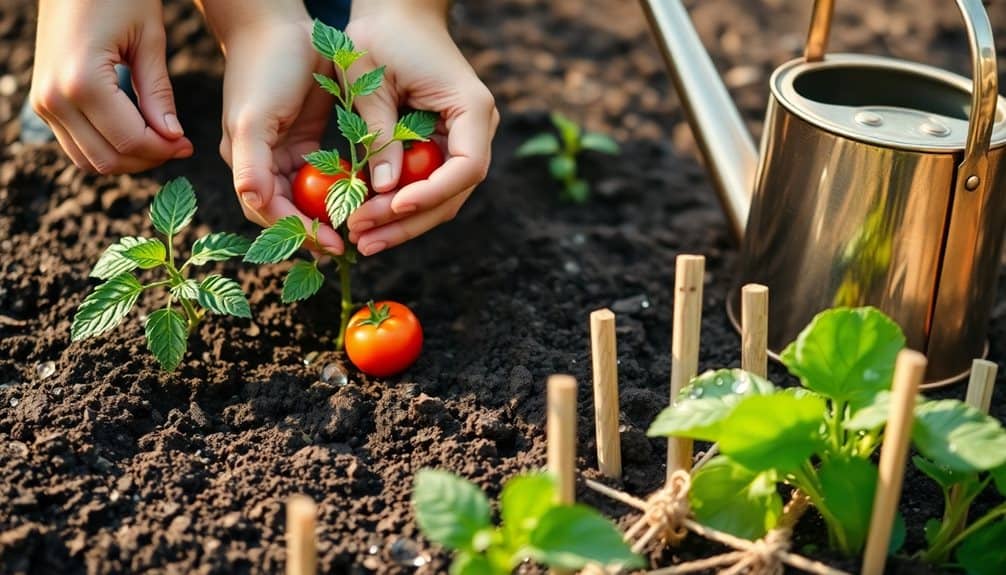
Proper planting and watering techniques form the foundation of a thriving vegetable garden. You’ll need to follow seed packet instructions carefully for planting depth and spacing, as different vegetables have varying requirements. Plant seeds in moist, well-draining soil, and gently firm the soil over them to guarantee good seed-to-soil contact.
For transplants, dig holes twice the width of the root ball and at the same depth as the original container. Carefully remove plants from their containers, loosen the roots if they’re bound, and place them in the holes. Fill with soil and create a slight basin around each plant to help collect water.
Water deeply and consistently rather than frequently and shallowly. Most vegetables need 1-1.5 inches of water per week through rainfall or irrigation. Water at the base of plants early in the morning to minimize evaporation and prevent leaf diseases. You’ll know it’s time to water when the top 1-2 inches of soil feels dry to the touch. Install a drip irrigation system or soaker hoses to guarantee consistent moisture levels and save time on manual watering. Adding brown materials like dried leaves between plants can help retain moisture and prevent unwanted pests in your garden.
Maintain and Monitor Growth

Once your garden is planted and watering routines are established, regular maintenance becomes your next focus. You’ll need to monitor your plants daily for signs of disease, pest damage, or nutrient deficiencies. Walk through your garden each morning to catch potential issues early, when they’re easier to address.
Keep these essential maintenance tasks in mind throughout the growing season:
- Remove weeds weekly before they compete with your vegetables for nutrients and water – pull them by hand or use a small garden hoe
- Support climbing plants with stakes, cages, or trellises as they grow taller, securing them with soft plant ties
- Prune off yellowed or diseased leaves, and pinch back excessive growth to encourage bushier plants and better air circulation
- Check soil moisture levels daily by inserting your finger 1-2 inches into the soil – adjust watering as needed
- Monitor for insect activity both harmful and beneficial – identify pests early and use organic controls when necessary
Document your garden’s progress with photos and notes about planting dates, harvest times, and any challenges you encounter. This information will prove invaluable for next year’s planning and improvements.
Frequently Asked Questions
How Do I Keep My Pets From Digging up My Vegetable Garden?
Like Noah protecting his precious cargo, you’ll need to safeguard your garden from curious paws. Install a sturdy fence around your vegetable plot, using chicken wire or hardware cloth buried 6-12 inches deep to prevent digging. You can also try natural deterrents like coffee grounds, citrus peels, or commercial repellents. Create a designated digging area with sand to redirect your pet’s attention elsewhere.
What Vegetables Can I Grow if My Homeowner’s Association Has Height Restrictions?
You’ll find plenty of low-growing vegetables that comply with HOA height restrictions. Focus on bush varieties of beans, compact tomatoes like “Patio” or “Tiny Tim,” and leafy greens such as lettuce, spinach, and arugula. Root vegetables like carrots, radishes, and beets grow primarily underground. Try bush cucumber varieties, compact peppers, and dwarf peas. Most herbs also stay naturally short and won’t violate height rules.
Should I Start a Garden Diary to Track My Gardening Progress?
Yes, you’ll find a garden diary invaluable for tracking your growing journey. Record planting dates, seed varieties, weather patterns, and harvest times to build a personalized growing guide. Document your successes and failures, pest problems, and soil amendments. Include photos of your plants’ progress and note which varieties performed best. Your diary will become an essential reference tool that helps you improve your gardening skills year after year.
Can I Grow Vegetables if My Yard Has Protected Tree Root Systems?
You can grow vegetables near protected tree roots by using raised beds or container gardens. Place these at least 6-8 feet away from tree trunks to avoid root interference. Consider shallow-rooted vegetables like lettuce, radishes, and bush beans, which won’t compete greatly with tree roots. You’ll need to monitor soil moisture carefully, as trees can absorb water from nearby plantings. Container gardening offers the most flexibility while protecting tree roots.
How Do I Prevent My Neighbor’s Invasive Vines From Spreading Into My Garden?
Like a medieval castle’s defensive moat, you’ll need multiple barriers to protect your garden from invasive vines. Install a physical barrier by burying heavy-duty landscape fabric or metal sheeting 12 inches deep along your property line. You can also prune aggressively at the first sign of encroachment, create root barriers with corrugated metal sheets, and apply targeted herbicides only to the invading vines’ foliage.


